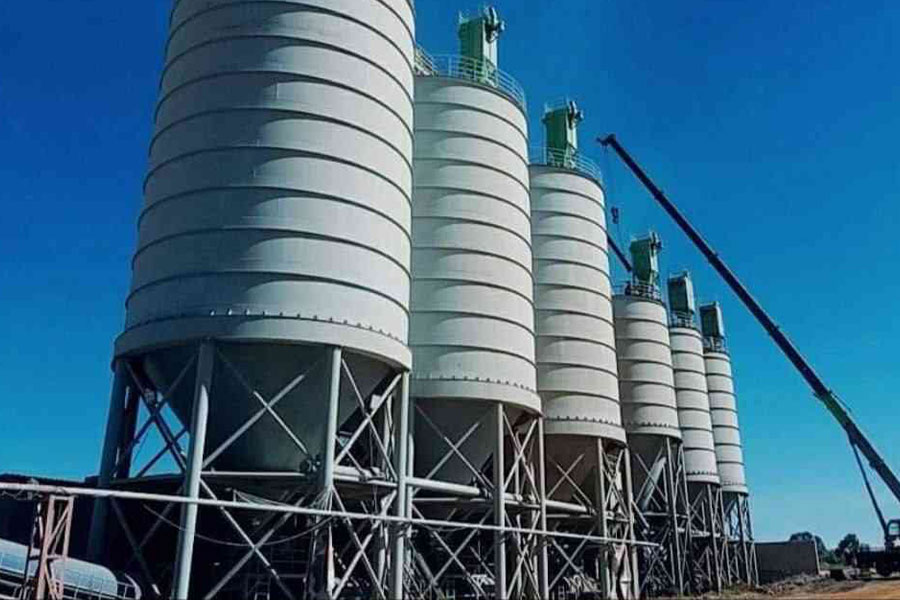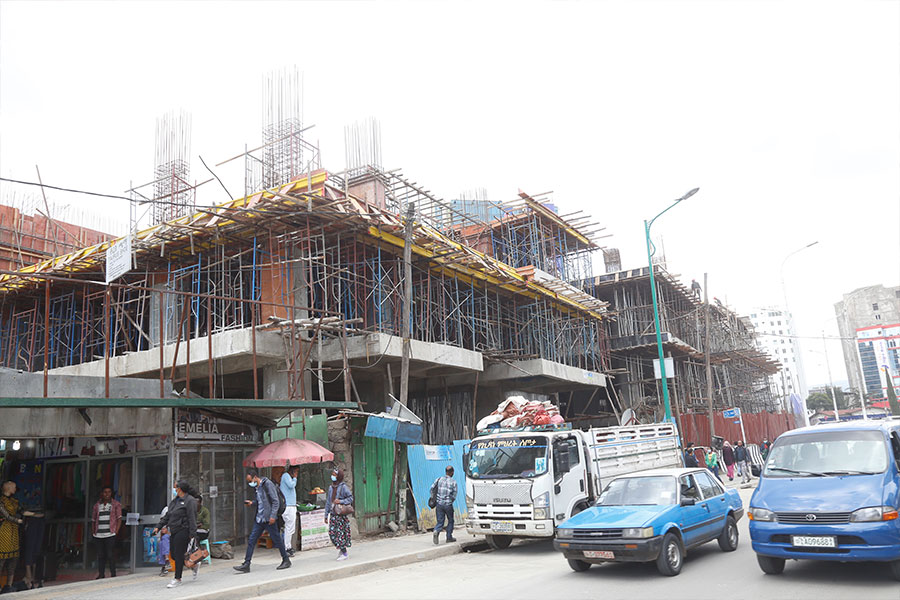
Fortune News | May 20,2023
Jan 5 , 2019
By
The potential of the sugar industry in Ethiopia has yet to be taken advantage of. The only things that stand in the way are better management and the institution of market forces, writes Austine Sequeira (PhD) (austinesequeira@gmail.com), socio-economic analyst and advisor.
There are no prizes for guessing what “13 months of sunshine” can offer. It is tea, coffee and sugar. Historically, coffee has performed well enough in Ethiopia to contribute hundreds of millions of dollars annually to the country’s coffers.
Tea has a relatively recent history and is seen to be growing under the shadow of the coffee sector. Despite favourable climatic conditions, it has not been as fortunate as the coffee to attract investment and government support.
The opposite can be said of the Ethiopian sugar sector. Over a century old and enjoying the best climatic conditions to produce sucrose, not to mention swallowing billions of dollars worth of investment, the sector seems to be the laggard in the pack.
There is no denying the fact that the sector has come a long way since the establishment of the first sugar factory at Wonji in the 1950s by foreign private investors in collaboration with the government. Today Ethiopia boasts of a combined sugarcane crushing capacity of 144,000tn a day (TCD) under development.
Sugar sector development that started in the first edition of the Growth & Transformation Plan with the investment of billions of dollars was expected to be completed in 15 years, enabling Ethiopia to produce millions of metric tonnes of refined sugar worth 1.1 billion dollars annually and contribute 20pc to export earnings, thereby competing with coffee exports. The development would also propel Ethiopia into the league of Brazil, India and overthrow Sudan as Africa’s largest sugar producer.
The sectoral picture today is not dismal but not encouraging either - for sure unaffordable to a developing economy like Ethiopia. After the passage of almost a decade, the nation today has 27,000 TCD of fully operational capacity, producing 600,000tn of sugar annually.
Up to 25,500 TCD capacity is ready for operations but almost idle due to the non-availability of sugarcane. Approximately 32,000 TCD capacity is under construction. Additionally, 59,500 TCD capacity is under various stages of development. This also means investment worth a billion dollars is unproductive and another billion dollars of investment may not see the light of the day and may be shelved.
Ethiopia is therefore on the brink of forgoing the investment and export opportunities as well. A lot of material available in the public domain suggests that rituals like the blame game, corrective and punitive actions are on.
But can these rituals put the sector on track?
A techno-economic analysis of the sugar sector development as it unfolded during the past decade suggests that both defective strategy and mismanagement of the sectoral expansion can be blamed for the current impasse.
Firstly, the successful historical track record was completely forgotten by the government while initiating the sectoral development. In the modern world, sugar is a private sector business. Sugar estates and plants built by colonial governments and the state have been privatised lock, stock and barrel.
The first Sugar project set up more than half a century ago at Wonji, and the second one at Metahara in 1970, were public-private partnership projects wherein the plant and machinery contractor was the partner, shareholder, and the operator.
Forgetting all this, the government decided to enter into the sugar sector on its own and set up Ethiopian Sugar Corporation (ESC), to manage existing and proposed projects. Lack of management expertise, as well as human power and frequent changes in the leadership, could have hardly presented a situation much different than the state of today!
Secondly, the successive leadership at the Corporation failed to emphasise that sugar is manufactured in sugar farms and not in the sugar plants. Little attention was paid to the lengthy process of setting up and managing sugar farms to feed the plant to operate at optimal capacities. As a result, an estimated 25,000 tonnes of cane a day for newly built modern capacity is idle or operating below capacity due to non-availability of sugarcane.
The Corporation management, with the exception of some, focused on project construction and blamed the contractors for everything but did not commercialise and mechanise sugarcane plantations.
Then, there was also the idea to indiginise sugar plants and machinery through Metals & Engineering Corporation (MetEC). Although sugar manufacturing technology is not nuclear science, there are specialised and established equipment manufacturers in Asia, Australia and Europe who act as suppliers only - as no single manufacturer can deliver the whole plant out of its facility - and then there are contractors who bring hundreds of equipment together and execute the project procurement, erection and commissioning services. Entrusting a state corporation that had only just formed two years ago with projects of these sizes was a big folly.
Lastly, the very structure of the Corporation is debatable. Instead of allowing each project to be independently managed and sales unit and instilling competitive spirit among them - as were Wonji, Metahara and Finchha units up to 2009 - ESC was established as a sole authority to invest, own, guide, manage and supervise every sugar factory. The centralisation of power always kills the development spirit at the unit level.
The mother of all challenges for sugar projects is the social impact assessment and management. Sugar projects in the Indian sub-continent have been a development tool, wherein, small capacity plants have been installed in remote, rural areas with designated command areas for farming and an assured supply of sugar cane.
Furthermore, the sugar companies spend large amounts developing the surrounding areas by making provision for education and health services and entrepreneurial support. In Ethiopia, state ownership of land creates bigger challenges - a sugar project owned by a federal entity is seen as an invasion unless the local population is involved in farming and plant operations by making livelihood, education and health facilities available.
Not all is lost yet. Solutions are available. Firstly, the ownership pattern of the individual sugar plants needs to be radically changed. The best option would be to transfer the ownership of the sugar plant and the sugar farms to regional governments. These regional governments should then privatise the sugarcane farms by allocating land parcels to local farmers and provide them training and mechanised inputs so that they cultivate and supply sugarcane to the respective sugar plants at a remunerative price.
No other form of privatisation and disinvestment will work. Secondly, the Corporation may be converted into a sole trading and export agency with a mandate to buy Sugar and Ethanol from the sugar plants purely based on market dynamics. This will also make the individual plants competitive and market savvy. Lastly, the sugar projects under construction, especially MetEC mandated projects, should be objectively assessed and scrapped if necessary.
There is no denying that these are radical measures which need political will rather than financial resources. The progressive government led by Prime Minister Abiy Ahmed (PhD) should pick up the gauntlet to make the Ethiopian sugar sector productive.
PUBLISHED ON
Jan 05,2019 [ VOL
19 , NO
975]

My Opinion | 131967 Views | Aug 14,2021

My Opinion | 128357 Views | Aug 21,2021

My Opinion | 126294 Views | Sep 10,2021

My Opinion | 123910 Views | Aug 07,2021

Dec 22 , 2024 . By TIZITA SHEWAFERAW
Charged with transforming colossal state-owned enterprises into modern and competitiv...

Aug 18 , 2024 . By AKSAH ITALO
Although predictable Yonas Zerihun's job in the ride-hailing service is not immune to...

Jul 28 , 2024 . By TIZITA SHEWAFERAW
Unhabitual, perhaps too many, Samuel Gebreyohannes, 38, used to occasionally enjoy a couple of beers at breakfast. However, he recently swit...

Jul 13 , 2024 . By AKSAH ITALO
Investors who rely on tractors, trucks, and field vehicles for commuting, transporting commodities, and f...

Jul 5 , 2025
Six years ago, Ethiopia was the darling of international liberal commentators. A year...

Jun 28 , 2025
Meseret Damtie, the assertive auditor general, has never been shy about naming names...

Jun 21 , 2025
A well-worn adage says, “Budget is not destiny, but it is direction.” Examining t...

Jun 14 , 2025
Yet again, the Horn of Africa is bracing for trouble. A region already frayed by wars...

Jul 6 , 2025 . By BEZAWIT HULUAGER
The federal legislature gave Prime Minister Abiy Ahmed (PhD) what he wanted: a 1.9 tr...

Jul 6 , 2025 . By YITBAREK GETACHEW
In a city rising skyward at breakneck speed, a reckoning has arrived. Authorities in...

Jul 6 , 2025 . By NAHOM AYELE
A landmark directive from the Ministry of Finance signals a paradigm shift in the cou...

Jul 6 , 2025 . By NAHOM AYELE
Awash Bank has announced plans to establish a dedicated investment banking subsidiary...